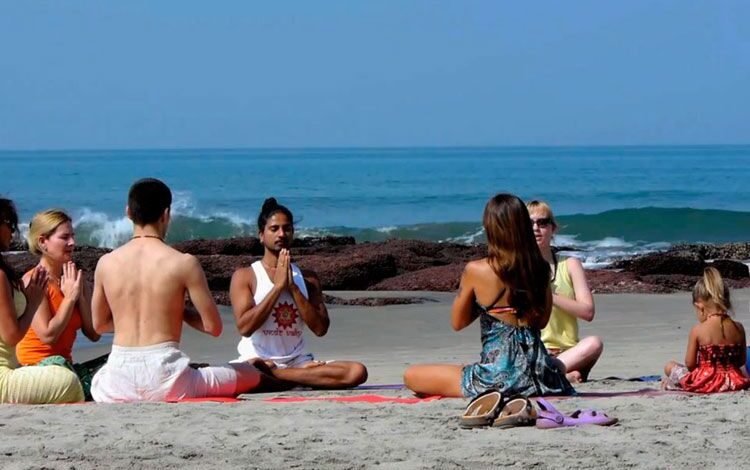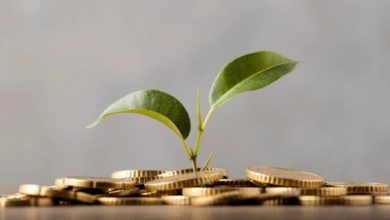Indian Startups need to get bullish on ‘Wellness Tourism’

Wellness Tourism, simply defined is travel associated with the goal of maintaining or enhancing one’s personal well-being and includes the pursuit of physical, mental, spiritual or environmental ‘wellness’ while traveling for either leisure or business.
US-based Vacayou, a new online platform for discovering and booking wellness travel experiences, had raised USD 3.3 million in combined angel and seed rounds to support its launch last year.
Another growing US-based startup Basubu’s founders say as a result of the pandemic they noticed increased demand for travel built around wellness experiences, such as yoga, meditation, painting, cooking, hiking and more. The site launched in September 2021 and provides information and booking of hundreds of retreats in locations around North and Central America, Europe and Asia.
Global Wellness Institute noted, “As we emerge from the pandemic, GWI predicts that the wellness economy will return to its robust growth. We project 9.9 percent average annual growth, with the wellness economy reaching nearly USD 7.0 trillion in 2025.”
The Global Wellness Institute ticks off 11 distinct sectors of the wellness economy: Personal Care and Beauty (USD955 billion); Healthy Eating, Nutrition, and Weight Loss (USD946 billion); Physical Activity (USD 738 billion); Wellness Tourism (USD 436 billion); Traditional & Complementary Medicine (USD 413 billion); Public Health, Prevention, and Personalized Medicine (USD 375 billion); Wellness Real Estate (USD 275 billion); Mental Wellness (USD 131 billion); Spas (USD 68 billion); Workplace Wellness (USD 49 billion); Thermal/Mineral Springs (USD 39 billion)
In another report by Grand View Research, the global wellness tourism market size is expected to reach USD 1.02 trillion by 2030. The market is expected to expand at a CAGR of 9.93 percent from 2022 to 2030.
A 2021 survey from American Express found that 76 percent of those polled wanted to spend more on travel to enhance their well-being and 68 percent said that their next vacation would be geared toward improving mental well-being
According to a recent report on Indian Wellness Tourism Market by Mordor Intelligence, the Covid-19 pandemic had a severe impact on the Wellness Tourism Market in India. India’s Wellness Tourism Market is growing at a CAGR of 8 percent over the next 5 years.
The tourist inflow decreased drastically due to the pandemic-related restriction. The wellness tourism expenditure decreased by more than 40 percent for the period. India slipped to the 12th position in the top 20 most preferred wellness destinations in the world.
When it comes to Wellness Tourism, India is the most popular tourist destination in South Asia, and it is rapidly expanding.
In 2019, the country welcomed almost 18 million international tourists, up from 17.42 million in 2018 while it decreased to only 6.33 million in 2020. India is one of the most preferred destinations for wellness tourism with more than 48.2 million wellness trips in 2020. Before the pandemic, India was the fastest-growing market for wellness tourism.
Traditional ayurvedic resorts, destination spas, and wellness retreats are among the expanding number of hotels and resorts in India that offer a full package of treatments, experiences, and travels.
With 48.2 million trips in 2020, India was in the 12th position of 20 preferred destinations for wellness tourism. The total wellness expenditure for India was USD 11.4 billion in 2017 while it decreased to USD 7.2 billion in 2020 due to pandemic. The wellness tourism expenditure decreased by almost half for the year 2020. However, the market is expected to experience increased expenditure in the wellness tourism market with an increase in the number of tourist inflow post pandemic, according to the Mordor Intelligence report.
The Wellness Tourism sector is expanding in India and the northward climb is reflected in India’s international tourism receipts.
The segment generated more than 25 million jobs in 2019. Wellness tourism has been one of the drivers of the growth of India’s tourism sector as many of India’s product offers include meditation, yoga, and Ayurveda retreats.
In India’s wellness sector traditional medicine sectors contribute for the largest share, followed by the personal care & beauty, nutrition, and wellness tourism sector.
In another report on India’s Wellness Tourism Market, it was indicated that the growing penetration of smart electronic devices such as smartphones, tablets, and laptops, coupled with the increasing internet penetration, is playing a notable role in increasing the number of wellness tourists. In today’s digital world, high social media marketing by travel agents and travel purpose providers is contributing significantly to the growth of the market. In addition, the internet is playing an active role in educating tourists about wellness tourism and its benefits.
The increasing disposable income and spending capacity and growing consumer interest in travel, health, and new experiences are the main factors augmenting the market growth. Psychiatric disorders such as stress, frustration, and anxiety lead to chronic health-related illnesses such as cancer and depression. Due to the increasing awareness regarding mental and physical health, people all over the world want to take measures to prevent the early onset of diseases.
India, unfortunately, wellness tourism is often clubbed with medical tourism but wellness tourism is not medical tourism. Therefore, in India there are several startups focusing on medical tourism and wellness but few on wellness tourism. One of reasons mooted by industry experts’ shortage of skilled staff for spas and other wellness services and a lack of staff training to meet international standards.
There is a tremendous scope for Indian startups to innovate in the wellness tourism space. Traditional Indian wellness science coupled with technological innovation and hospitality will be a game changer not only in India but globally as the demand for wellness tourism only rises.




